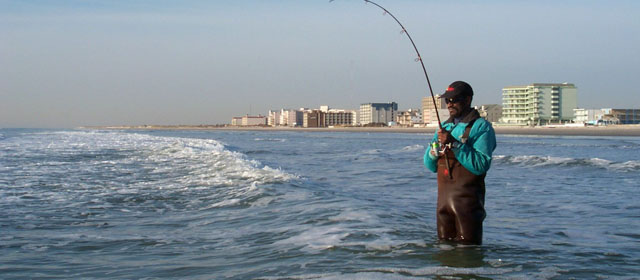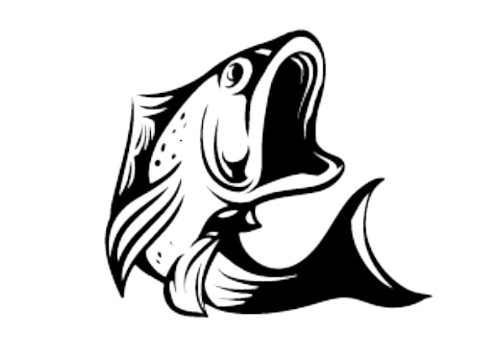How to Fish a Bucktail Jig in the Surf

To fish a bucktail jig in the surf, cast the jig out and retrieve it with a twitching motion to imitate a baitfish. In the following paragraphs, we will explore the various techniques and tips to effectively use a bucktail jig in the surf.
Fishing with a bucktail jig in the surf can be an exciting and productive way to catch fish. The bucktail jig, featuring a lead head and a skirt made of deer hair, is known for its versatility and ability to imitate a variety of prey.
When fishing in the surf, it’s important to understand how to properly present the bucktail jig to attract fish. One of the key techniques for fishing a bucktail jig in the surf is the retrieve. After casting the jig out into the surf, retrieve it by using a combination of small twitches with the fishing rod and reeling in the slack line. This imitates the movement of a wounded baitfish and can entice predatory fish to strike. Vary the speed and duration of the twitches to find what works best for the conditions and fish species you are targeting. Another important aspect of fishing a bucktail jig in the surf is the depth at which the jig is presented. Adjust the weight of the bucktail jig or use a sinking or floating jig head to control the depth at which it swims. This allows you to target various parts of the water column and increase your chances of attracting fish. In addition to the retrieve and depth control, consider the color and size of the bucktail jig. Different fish species have varying preferences when it comes to color and size, so it’s beneficial to have a selection of jigs in different colors and sizes to experiment with. Natural colors such as white, chartreuse, and olive can be effective in clear water, while brighter colors like yellow or pink may work well in stained or murky water. Lastly, pay attention to the environmental factors when fishing a bucktail jig in the surf. The tide, wave action, and current can all influence the success of your fishing. Try fishing during incoming or outgoing tides when water movement is stronger, as this can attract fish closer to shore. Additionally, look for areas with structure such as sandbars, jetties, or rock piles, as these can hold fish and provide ambush points. Fishing a bucktail jig in the surf requires a combination of proper retrieve, depth control, color and size selection, and awareness of environmental factors. Experiment with different techniques and adapt to the conditions to increase your chances of success. So, next time you head to the surf, don’t forget to bring along your bucktail jig and give it a try.

Credit: www.youtube.com
Choosing The Right Bucktail Jig
Choosing the right bucktail jig for surf fishing requires considering several factors. First, when selecting a jig, it’s important to choose the appropriate size. This will depend on the size of the fish you’re targeting and the conditions in the surf.
Additionally, color is another crucial element to consider. Different colors can attract different species of fish, so it’s essential to choose a color that matches the baitfish in the area. Experimenting with different colors can help you determine which is most effective.
Remember, when fishing in the surf, visibility can be limited, so it’s vital to choose a color that stands out. By following these tips and considering factors like size and color, you can increase your chances of success when fishing a bucktail jig in the surf.
Essential Gear And Tackle For Surf Fishing With A Bucktail Jig
Fishing a bucktail jig in the surf requires essential gear and tackle. It is crucial to have the right rod and reel for surf fishing. Along with that, selecting the appropriate line and leader is equally important. These choices can greatly affect your success in catching fish.
To enhance your outing, there are also must-have accessories and additional tackle that can be beneficial. Having the right equipment and gear can make a significant difference when fishing with a bucktail jig in the surf. So, be sure to make the right choices and come prepared for a successful and enjoyable fishing experience.
Techniques And Tips For Fishing A Bucktail Jig In The Surf
Fishing a bucktail jig in the surf requires a good understanding of the surf conditions. By analyzing the waves, tides, and water clarity, you can adjust the jig presentation accordingly. Different surf conditions call for different retrieval methods to attract fish.
In calm waters, a slow and steady retrieve with occasional pauses can work well. In rougher surf, a faster, more aggressive retrieve might be necessary to get the attention of fish. Varying the retrieval speed and jigging action can help entice strikes from different species.
Experimenting with different techniques and observing the behavior of the fish can help you determine the most effective approach. By adapting to the surf conditions and using the right techniques, you can increase your chances of success when fishing a bucktail jig in the surf.
Adjusting Depth And Speed For Targeted Species
When fishing a bucktail jig in the surf, it’s essential to adjust the depth and speed based on the targeted species. Varying your jigging technique can make a significant difference in attracting different fish. Here are a few strategies for effectively targeting specific species that inhabit the surf zone.
Firstly, for striped bass, try a slow retrieve with occasional pauses to mimic injured baitfish. For fluke, use a more aggressive jigging motion by lifting and dropping your rod tip to imitate their natural feeding behavior. When targeting bluefish, a fast retrieve with erratic jerks can trigger their aggressive nature.
And if you’re after weakfish, a slow and steady retrieve near the bottom can entice them to strike. By adapting your approach, you increase your chances of success and enjoy a more rewarding fishing experience in the surf.
Working The Bucktail Jig In Structure And Cover
Fishing a bucktail jig in the surf requires specific tactics to maximize your success. When fishing around rocks, jetties, and other structures, it’s important to work the jig effectively. By casting close to the structure, you can entice fish that are seeking shelter or feeding in these areas.
Retrieve the jig with short, sharp movements to imitate a wounded baitfish or shrimp, which can trigger the predator instincts of fish. It’s also crucial to be aware of vegetation and other cover in the surf. Cast near these areas and vary your retrieve to mimic the movements of prey.
Remember to keep your line tight and be ready for a strike at any moment. By using these tactics, you can increase your chances of landing fish while fishing a bucktail jig in the surf.
Reading The Surf And Locating Fish
Understanding wave patterns and currents is crucial for locating fish in the surf. By observing the surf zone, you can identify productive areas where fish are likely to be present. Look for areas where waves break differently or where there are changes in water color or depth.
These variations indicate the presence of sandbars, troughs, or underwater structures that attract fish. Pay attention to the direction and power of the currents, as they can create eddies and rip currents that serve as feeding grounds for fish. By carefully reading the surf and understanding these indicators, you can increase your chances of successfully fishing a bucktail jig in the surf.
With practice and experience, you’ll become adept at recognizing these patterns and finding the best spots to catch fish.
Best Practices For Surf Fishing With A Bucktail Jig
Surf fishing with a bucktail jig requires proper casting techniques for distance and accuracy. Maintain control and avoid snags by considering the rough surf. Prioritize safety precautions and etiquette while enjoying this activity on the beach. Learning how to fish a bucktail jig in the surf can be a rewarding experience.
Frequently Asked Questions Of How To Fish A Bucktail Jig In The Surf
How Do You Fish A Bucktail Jig In Saltwater?
To fish a bucktail jig in saltwater, cast it out and let it sink to the desired depth. Then, retrieve it with a steady and jigging motion, keeping it near the bottom. Vary the speed and depth of your retrieve to imitate the movement of prey and attract strikes from fish.
Bucktail jigs are effective for a variety of species such as striped bass, flounder, and bluefish. Experiment with different colors and sizes to find the most successful combination for your fishing conditions. Remember to use a suitable rod and reel setup for saltwater fishing and always check local regulations for size limits and catch restrictions.
What Fish Are Bucktail Jigs Good For?
Bucktail jigs are versatile lures that can be effective for various fish species. They work well for predatory fish like bass, walleye, pike, and musky. Additionally, they are also successful for saltwater species such as striped bass, flounder, and redfish.
The lifelike action of the bucktail hair and the enticing movement of the jig make it attractive to a wide range of fish. Whether you are fishing in freshwater or saltwater, bucktail jigs can be a reliable choice for catching different types of fish.
Do You Put Anything On A Bucktail Jig?
No, you do not need to put anything on a bucktail jig. It is designed to attract fish on its own.
Do You Use A Swivel With A Bucktail Jig?
Yes, a swivel can be used with a bucktail jig. It helps to prevent line twists and tangles.
Conclusion
Overall, fishing a bucktail jig in the surf can be an incredibly rewarding experience for anglers of all skill levels. With its versatility and effectiveness in attracting a wide range of fish species, it’s no wonder why this technique has gained popularity among surf fishermen.
By following the proper steps of choosing the right bucktail jig, selecting the right fishing location, and utilizing the right techniques, you can significantly increase your chances of success. Remember to consider the size and color of the bucktail jig, as well as the retrieval speed and presentation technique, to effectively mimic the prey and entice the fish.
Keep in mind the importance of reading the surf conditions, adjusting your fishing approach accordingly, and incorporating patience and persistence. So, next time you find yourself by the ocean, give bucktail jig fishing in the surf a try – you might just reel in your next trophy catch!
